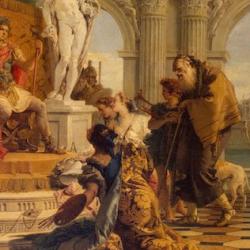Augustine argues that certain hierarchies are built into the creation (City of God 11.16). There is, for instance, a natural hierarchy of sentient, intelligent, immortal souls.
In addition to these natural hierarchies, he suggests that there are hierarchies of “use.” Hierarchies of use are often the reverse of natural hierarchies. In nature, animate things are better than inanimate; but we’d rather have bread to eat than a mouse. Intelligent are naturally better than unintelligent, but sometimes we’d rather have a horse than a slave.
Besides, circumstances and necessities, change the value we place on things. Reason considers natural value of something, but there is also a consideration according to necessity (necessitas autem quid propter quid expetat cogitat), a marginal utility that makes something that is normally cheap quite valuable.
Natural hierarchy is not slavishly reproduced in human society and human exchange, yet men operate inescapably in hierarchical patterns. This distinction is important for understanding the character of the two cities. Cities differ according to valuations, but these valuations don’t necessarily reflect the valuations and hierarchies evident in reason or nature. Even the heavenly city doesn’t necessarily reflect the hierarchy of reason or natural value.
Augustine’s ideal city, in short, is not a civitas rationis. It is a civitas Dei, which means a city that accommodates the needs and circumstances of the citizens.
(Quod si omnino desit, nihil boni adimendo non nocet ac per hoc nec vitium est.










